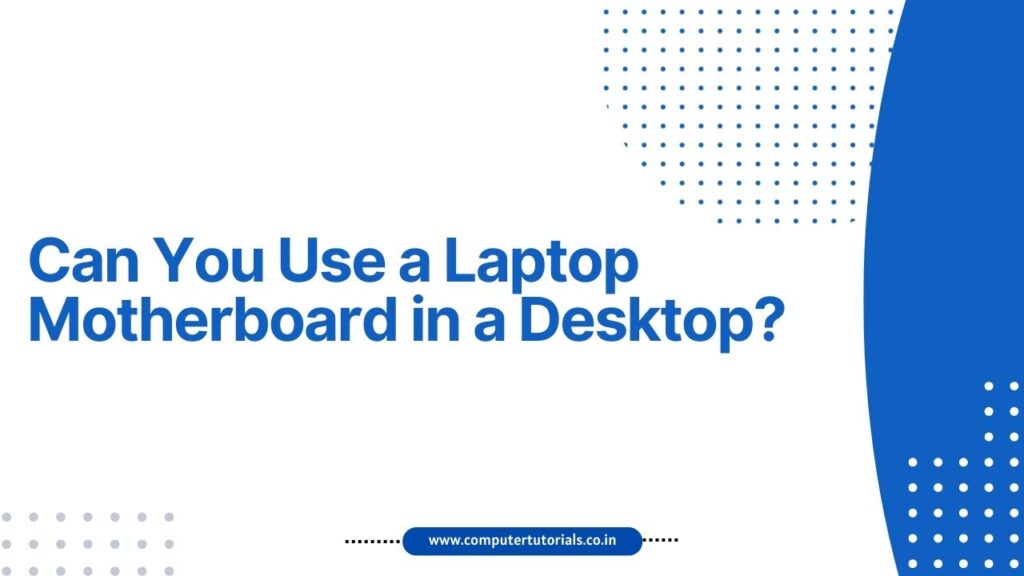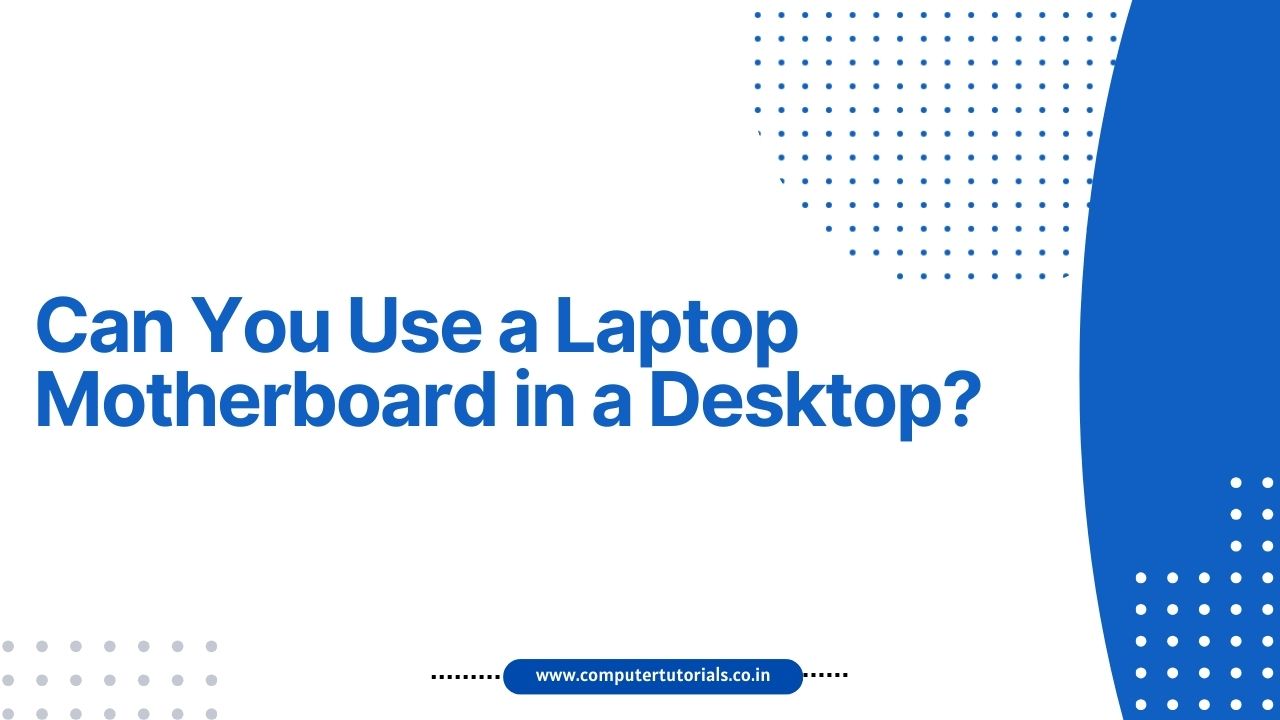Introduction Can You Use a Laptop Motherboard in a Desktop?

Introduction
The world of technology is full of creative ideas and experiments. One such question that often arises in tech enthusiast circles is whether it’s possible to use a laptop motherboard in a desktop setup. The concept might seem intriguing, but is it feasible? In this article, we will dive into the details and explore the compatibility and possibilities of using a laptop motherboard in a desktop configuration. So, if you’re wondering whether you can repurpose your old laptop’s motherboard for a new desktop build, let’s find out.
Can You Use a Laptop Motherboard in a Desktop?
Laptops and desktops are designed with different form factors and purposes in mind. While it’s not a common practice to use a laptop motherboard in a desktop, it’s not entirely impossible. However, several factors need to be considered before attempting such a setup.
1. Form Factor and Size
The primary challenge when using a laptop motherboard in a desktop is the difference in form factors and sizes. Laptop motherboards are much smaller and tailored to fit within the compact confines of a laptop chassis. In contrast, desktops come in various form factors like ATX, Micro-ATX, and Mini-ITX, requiring larger motherboards. Adapting a laptop motherboard to fit a desktop case might involve custom modifications and mounting solutions.
2. Power Supply Compatibility
Laptops and desktops also differ in power supply requirements. Laptop motherboards are designed to work with low-power laptop adapters, while desktops typically have higher wattage power supplies. Ensuring the laptop motherboard can receive the appropriate power supply voltage and current is crucial to avoid damage.
3. Component Integration
Laptops are built with integrated components to save space and power. They often have onboard graphics, Wi-Fi, and other features. In contrast, desktops allow for more flexibility with discrete components, such as dedicated graphics cards and expansion cards. Compatibility issues may arise when trying to use integrated laptop components in a desktop setup.
4. I/O Ports and Connectors
Laptops and desktops have different I/O configurations and connectors. For example, laptops may use proprietary connectors for peripherals and may lack certain ports found on desktop motherboards. Adapting these connections may require additional hardware and workarounds.
Possibilities and Benefits
While using a laptop motherboard in a desktop has its challenges, there are some potential possibilities and benefits worth exploring:
1. Low-Power Home Server
If the laptop motherboard is compatible with the desktop case and power supply, it could be repurposed as a low-power home server. Home servers don’t always require high-end performance, and a laptop motherboard might suffice for basic file storage and media streaming.
2. DIY Tech Projects
For tech enthusiasts and hobbyists, repurposing a laptop motherboard into a desktop opens up possibilities for various do-it-yourself (DIY) projects. These projects can range from building a budget gaming setup to creating a custom media center.
3. Learning Experience
Attempting to integrate a laptop motherboard into a desktop is a valuable learning experience. It allows you to understand the intricacies of hardware compatibility, electronics, and system building, honing your technical skills.
FAQs
Q: Can I use a laptop’s CPU in a desktop build? A: In most cases, laptop CPUs are soldered onto the motherboard and cannot be removed or used in desktop builds.
Q: What are the risks of using a laptop motherboard in a desktop? A: Risks include compatibility issues, power supply problems, and potential damage to components due to improper voltage or mounting.
Q: Are there adapters available to use laptop components in a desktop? A: Some adapters exist, but they may not work universally due to the vast array of laptop motherboard designs.
Q: Can I upgrade laptop components on the motherboard for better performance? A: Upgrading laptop components on the motherboard is challenging and may not yield significant performance improvements.
Q: Is it worth the effort to use a laptop motherboard in a desktop? A: It depends on your technical skills, the level of effort required, and your intended use. For most users, it’s more practical to use standard desktop components.
Conclusion
While the idea of using a laptop motherboard in a desktop might sound fascinating, it’s essential to consider the compatibility challenges and potential risks. In most cases, it’s more practical to opt for standard desktop components to build or upgrade your desktop. However, for DIY enthusiasts and tech tinkerers, experimenting with a laptop motherboard can lead to exciting and educational experiences. Always weigh the pros and cons, and if you’re unsure about the compatibility, it’s best to consult with a knowledgeable professional before embarking on this unconventional tech adventure.
